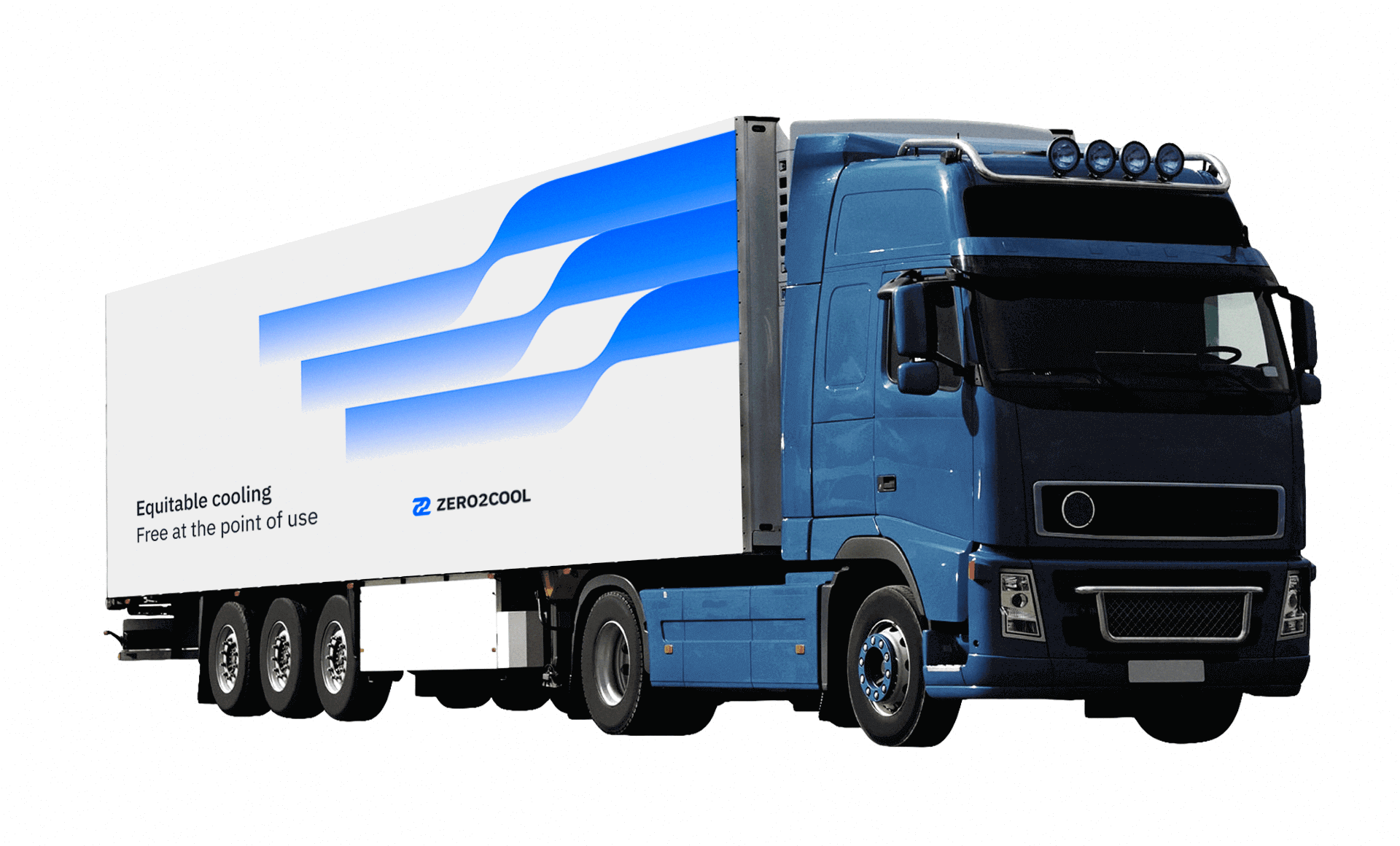Have you ever thought about the impact of something we all take for granted, cooling and refrigeration? Or, perhaps, the impact of having to do without it?
The world is facing a triple crisis today: climate change, meaning we are all going to need much more cooling and refrigeration as things get hotter – in fact the IEA predicts that 75% of humanity will face health risks from extreme heat over the next 30 years – plus an energy and food crisis in the immediate term, as oil prices rise and supply chains are disrupted.
In the developing world, where a very significant part of all power is supplied by diesel generators – over 20 terawatt hours a year in each of Nigeria and India, for example – it is simply too expensive to use those diesel generators to provide the electricity to power cooling or refrigeration equipment. It’s actually cheaper to accept food loss levels in the distribution chain for perishable foods of as much as 65% in some food staples. All of this is catastrophic for the rural economy, for people’s health and well-being, and for the planet, because that food lost rots down and produces methane, which has a Global Warming Potential 28 times that of CO2.
In fact, according to the UN FAO, if food loss were a country, it would be the third largest producer of greenhouse gases after China and the USA:
Another inconvenient truth is that all engines, no matter how new, are fundamentally inefficient – around 30% – in that the majority of the energy we put in in terms of fuel is simply turned into heat, most of which is then lost in the exhaust.
What if, by harnessing that heat loss, we could eliminate the operational cost of cooling and, at the same time, eliminate the greenhouse gas emissions associated with burning fuel to power cooling equipment and, most important, substantially reduce those very high levels of food loss?
This is what we do at ChillTech.
We are a London-based company, with patented technology allowing us to deliver cooling – building and refrigeration, for a/c, refrigerated storage and transport – free at the point of use, with zero fuel cost and zero carbon impact.
We do this by using the waste heat of the exhaust of an engine or generator – an engine or generator already running to produce power – from diesel and gas, through to hydrogen and biomass/bio-fuels, as the heat source to power an absorption chiller, the unit which produces the chilled water for the air-conditioning or refrigeration.
Our patents are centred on the design of a more efficient absorption system which allows us to use direct waste heat, including on a smaller scale, so that things such as refrigerated transport cooling from waste heat are made possible.
Transportation Refrigeration Units add about 20% to the fuel consumption of the truck, which adds up to 9,000 litres of diesel per annum. Our technology completely eliminates this cost, thereby solving the usual conundrum of climate tech, which is how to make it pay for itself and benefit the user, who is often in a stretched financial position in the first place – all the more so with fuel prices having quadrupled since 2021 in parts of Africa – in order to more broadly benefit the planet by delivering decarbonization in the supply chain.
Our technology – absorption chilling using waste exhaust heat from engines and generators as the primary power source (absorption cooling uses a thermal, as opposed to an electrical, compressor to generate the cooling load) – delivers a 100% free operational cost of cooling, substantially reduces food waste and delivers huge economic and carbon reduction benefits. We also use a natural refrigerant (ammonia) which has zero Global Warming Potential., unlike conventional cooling and refrigeration systems, which have GWPs of between 1,300 and as high as 10,000!
The key is that we use the direct heat of the exhaust from the very engines which cause so much pollution and GHGs. What would otherwise be wasted – just pumped into the atmosphere – is repurposed to deliver the power which delivers the cooling.
Our tech is patented in the UK, US, Canada, the EU: we have been the first to deliver an improved design for an absorption system which allows for the use of direct waste heat – just plug directly into the exhaust and play – and at small as well as larger size. We don’t have to go through another stage to generate power from heat, unlike other technologies using waste heat, which reduces cost and makes our technology deployable in smaller sizes. This is why we can make it work for cooling in refrigerated transport.
Our target markets are cold chain – both cold storage and refrigerated transport – building cooling (hotels, residential units, schools, hospitals, government buildings), micro grids – localized power, which is a major growth area in energy infrastructure – and temporary and leased power – events like Glastonbury, Burning Man, F1, etc, all of which require major temporary power and cooling, all provided by generators – and longer term uses such as construction and off-grid mining.
Geographical markets are global, with both developed and developing markets as targets. In the developing world, our technology will catalyze adoption of cold chain, where there is none today.
Future Proofing
Firstly, it will probably and unfortunately be a long time before we can replace the existing infrastructure based on diesel generators and engines in the developing world; the World Bank suggests that we need to spend $130 billion by 2030 to deliver renewables-based infrastructure in the developing world. And this doesn’t include the infrastructure for hydrogen. Also, there are many parts of the world where conditions do not allow for widespread adoption of solar or wind, either for climatic reasons or lack of space – on islands, for example, a major target for our technology.
Second, as the IEA has shown in a detailed recent study, in long haul transportation, batteries are not currently a viable option to replace the internal combustion engine, both because of the weight/distance ratio and because of performance characteristics.
Third, as and when we get to hydrogen-based generation, whether in transport – the more likely direction for long haul according to the IEA- or in power generation, our chillers will still run off the exhaust of a hydrogen engine or fuel cell.
Carbon Credits and Cooling as a Service (CaaS)
As we make sales and our units are deployed in the market, their use will also generate substantial amounts of carbon credits for all of the emissions they will prevent – one of our TRUs on a 40ft refrigerated trailer can save up to 350 tonnes of CO2e from being emitted each year in Africa or India, for example, and add substantial economic benefit back into the food chain, from farmer to consumer, for every unit deployed, from the value of the food which is now not wasted and can be sold and consumed.
The monetisation of carbon credits is expected to generate a virtuous circle, allowing the company to lower the CAPEX barrier to entry via CaaS, thereby driving further adoption.
Get in touch
If you are interested in learning more about ChillTech for direct deployment in your supply chain, for CSR projects in off-grid communities you serve, as a source of carbon credits or indeed to find out how to invest in the future of cooling, please reach out:
[email protected]
+33644500521





